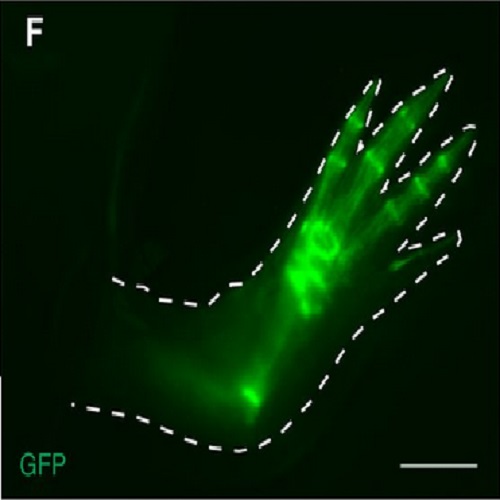Connective tissue cells, but not muscle cells, are involved in establishing the proximo-distal outcome of limb regeneration in the axolotl.
During salamander limb regeneration, only the structures distal to the amputation plane are regenerated, a property known as the rule of distal transformation. Multiple cell types are involved in limb regeneration; therefore, determining which cell types participate in distal transformation is important for understanding how the proximo-distal outcome of regeneration is achieved. We show that connective tissue-derived blastema cells obey the rule of distal transformation. They also have nuclear MEIS, which can act as an upper arm identity regulator, only upon upper arm amputation. By contrast, myogenic cells do not obey the rule of distal transformation and display nuclear MEIS upon amputation at any proximo-distal level. These results indicate that connective tissue cells, but not myogenic cells, are involved in establishing the proximo-distal outcome of regeneration and are likely to guide muscle patterning. Moreover, we show that, similarly to limb development, muscle patterning in regeneration is influenced by ?-catenin signalling.

- Development 2013 Feb 1;140(3):513-8
- 2013
- Developmental Biology
- 23293283
- PubMed
Enabled by:
